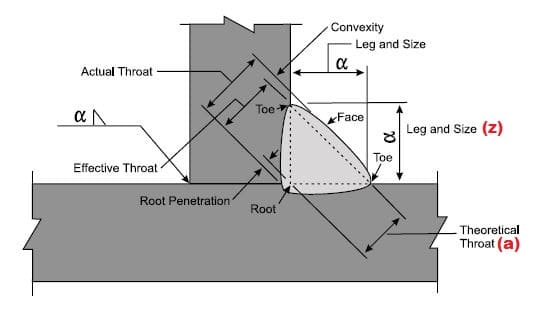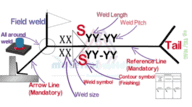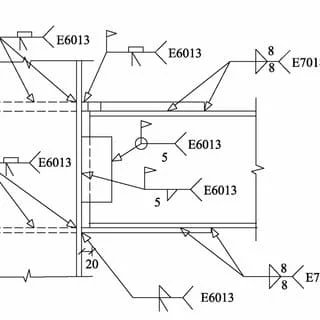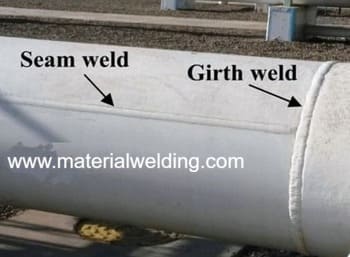What is Field Weld?
Field welding is a type of welding indicated by a Field Welding Symbol on the blueprints & drawings that has to be performed at the site or installation site, or away from a factory or other controlled environment such as workshop.
The term “field weld” can refer to any type of welding process, including gas metal arc welding (GMAW), flux-cored arc welding (FCAW), and shielded metal arc welding (SMAW) but the welding must be carried out at the site and not in the workshop.
The main advantage of field welding is that it allows for the construction of large structures such as bridges and buildings without the need to make as a single part in the factory.
Multiple single parts are welded in the workshop and finally welded together at the site. This can save both time and money.
Field welding also has some disadvantages. Because the welders are working in an uncontrolled environment, they may be exposed to weather conditions that can affect the quality of the welds.
Field Weld Symbol
Field Weld symbol is represented by a Flag. A field weld symbol is a pictorial representation using a flag placed at the intersection of the arrow and reference line of a welding symbol.
Presence of a flag in a welding symbol means welding has to be carried out at the field or site of final assembly.
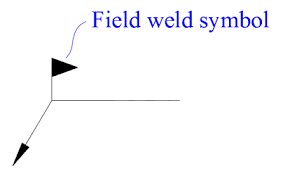
Field weld symbols are used on blueprints and drawings to specify the requirements for particular welds that need to be made at final stage of component assembly e.g., welding bridge connections at bridge location and not welding in workshop.
Related Reading: Welding Symbols: Complete Guide
Field Welding Symbol
A field welding symbol is a graphical representation given by a Flag placed at the junction of reference line and arrow line on a complete welding symbol (an all around fillet weld for site weld) as shown below.
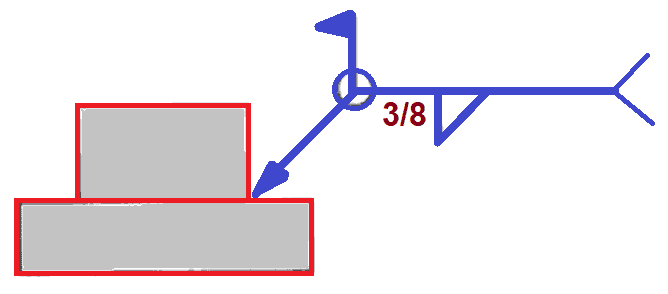
Presence of Flag on a welding symbol means that final welding shall be done at the installation site and not in the workshop. A correct Field welding symbol flag points towards the tail direction.
A field weld symbol has no arrow reference as it is a supplementary welding symbol similar to a contour symbol.
A Field welding symbol supplement the primary welding symbol such as Fillet weld, groove weld or any other weld type.
For a complete Field Welding Symbol, there are four mandatory parts:
- the arrow Line,
- Reference line
- the weld symbol,
- Field Weld symbol as a Flag.
- Tail (Optional)
The arrow points to the location of the weld, and the weld symbol indicates the type of weld that is needed. The tail contains information about the welding process or any other additional information If required.
The reference line is a straight line that connect arrow line and hold weld symbol on it. The arrow is placed on the reference line and points in the direction of welding.
The weld symbol is placed on the reference line and indicates the type of weld, such as fillet or groove.
The tail is placed at the end of the reference line and contains information about the welding process, NDT or any other information.
Field Weld symbol Direction
In welding, the field weld symbol is a pictorial representation of a weld that is to be made in the field or installation site.
The symbol consists of an arrow that points to the welding location, with a flag at the end of the arrow. The direction of the flag is always towards the tail side.
Field Weld symbol Meaning
A field weld symbol is a type of welding symbol that provides information about a particular welding process that is to be performed in the field.
The main purpose of a field weld symbol is to indicate that particular welding has planned at the final installation stage. All field welds must not be welded inside workshop.
Example for field welds is:
- Welding of small piping in job and finally welding them on site to connect it to bigger pipelines.
- Welding of heavy bridge in parts at workshop and then final welds at the site. Helping to reduce shifting heavy bridge and higher productivity.
- Welding of vessels in workshop and welding auxiliaries support pad at the installation site.
Field Weld vs Shop Weld Symbol
A field weld is a type of welding that is done in the field, away from a factory or shop. A shop weld is a type of welding that is done in a factory or shop. There are advantages and disadvantages to both types of welding.
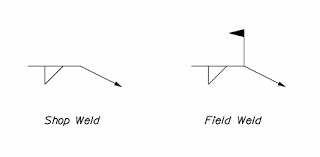
Shop welds are usually more precise because they can be done in a controlled environment. The welder has access to all the necessary tools and equipment, and the work area is typically clean and well-lit. This allows the welder to take their time and produce a high-quality weld.
In the example below, welding symbol-1 represents a Field weld. Here, a single bevel groove weld with a backing has to be welded on the site.
On the other hand, Welding symbol-2 indicates a fillet weld of 1/4 inch shall be welded at the workshop.
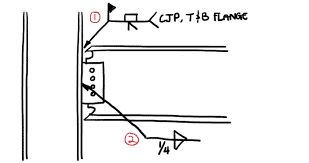
Field welds are less precise because they are done in an uncontrolled environment. The welder does not have access to all the necessary tools and equipment, and the work area is often dirty and poorly lit. This can make it difficult for the welder to produce a high-quality weld.
Field welds are beneficial for bulky fabrications and allow manufacturing of these heavy welded parts in small parts at the workshop. These parts can be finally welded using field weld on site.


